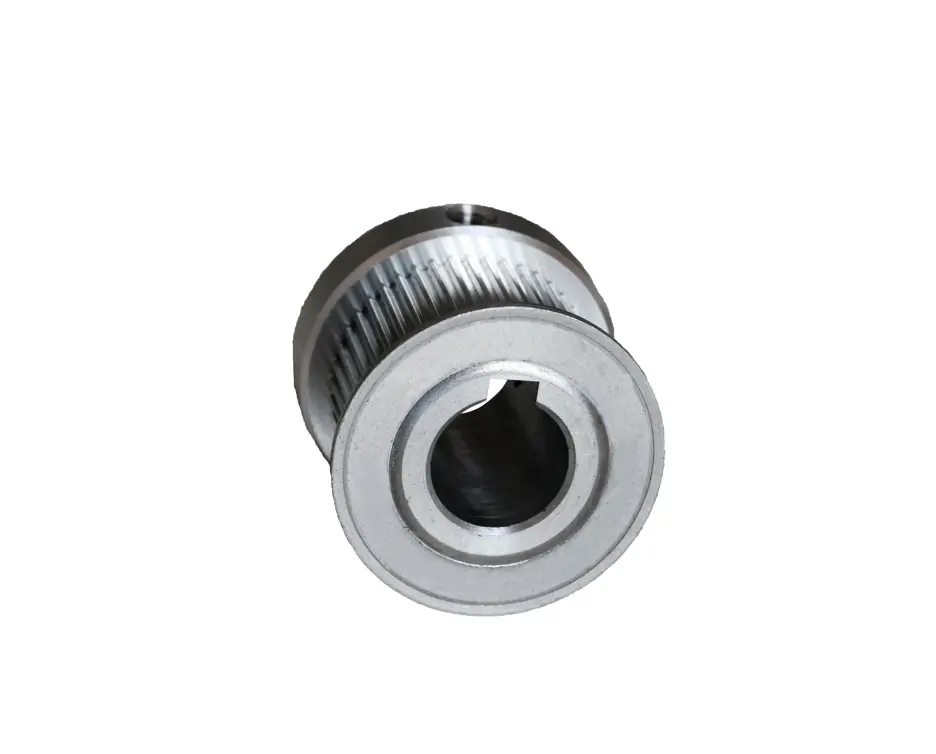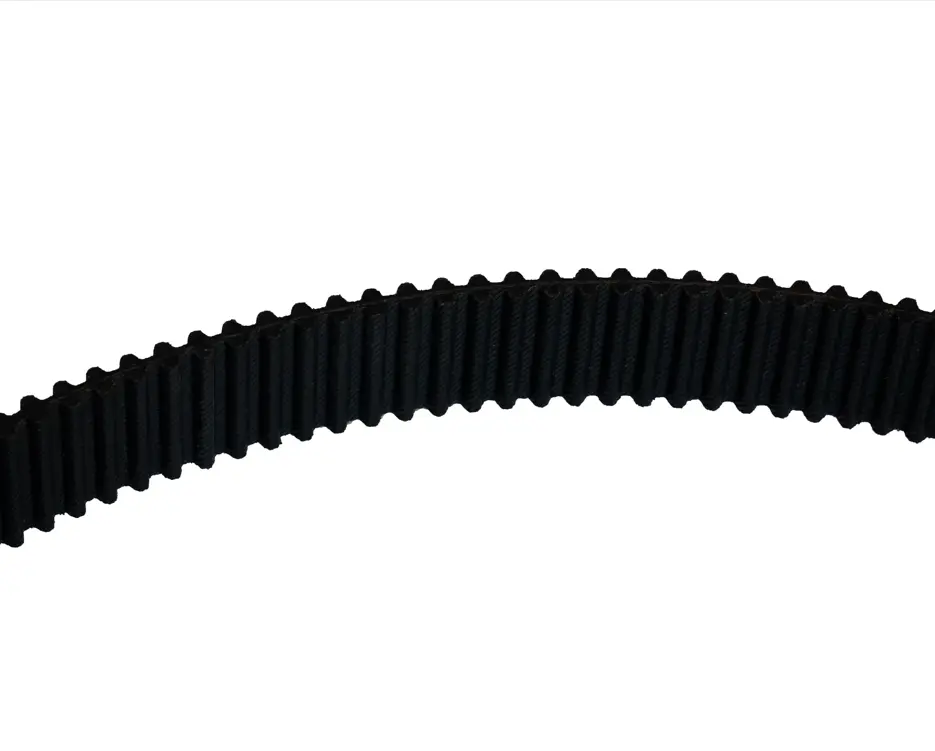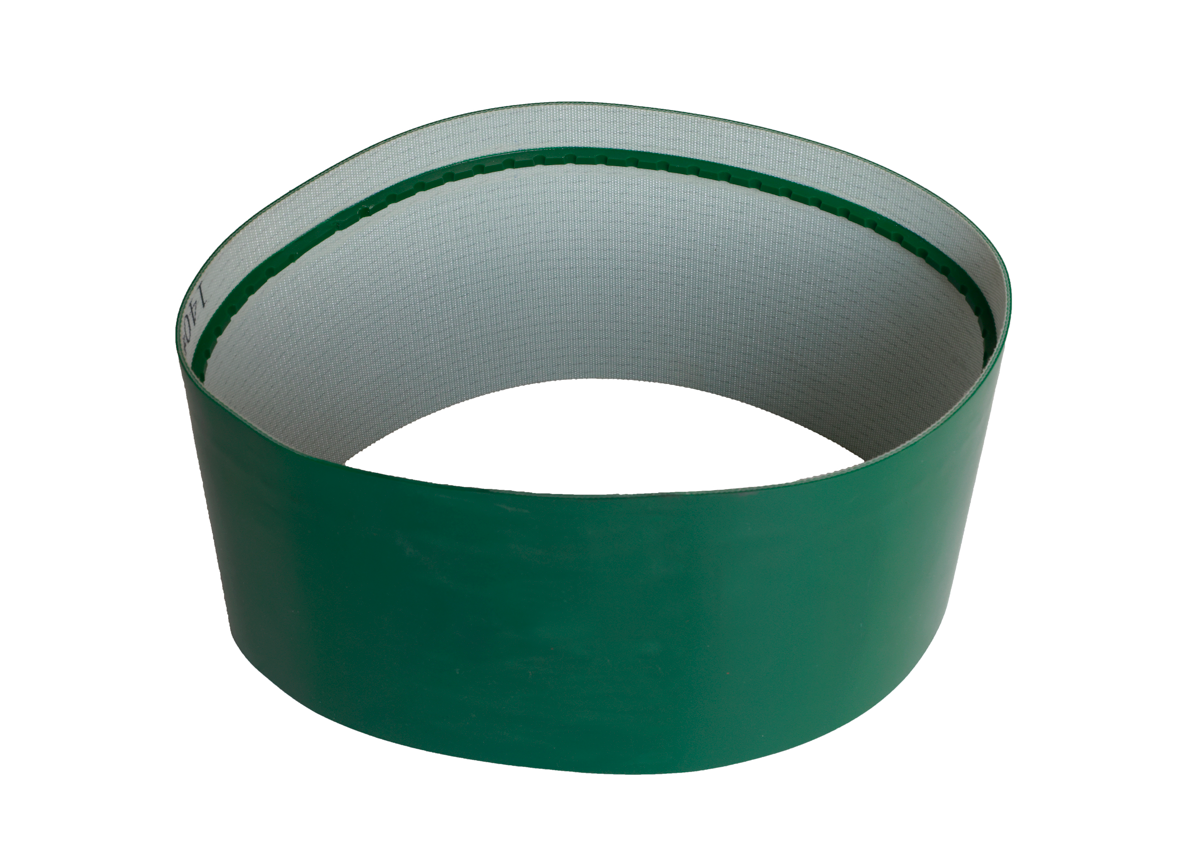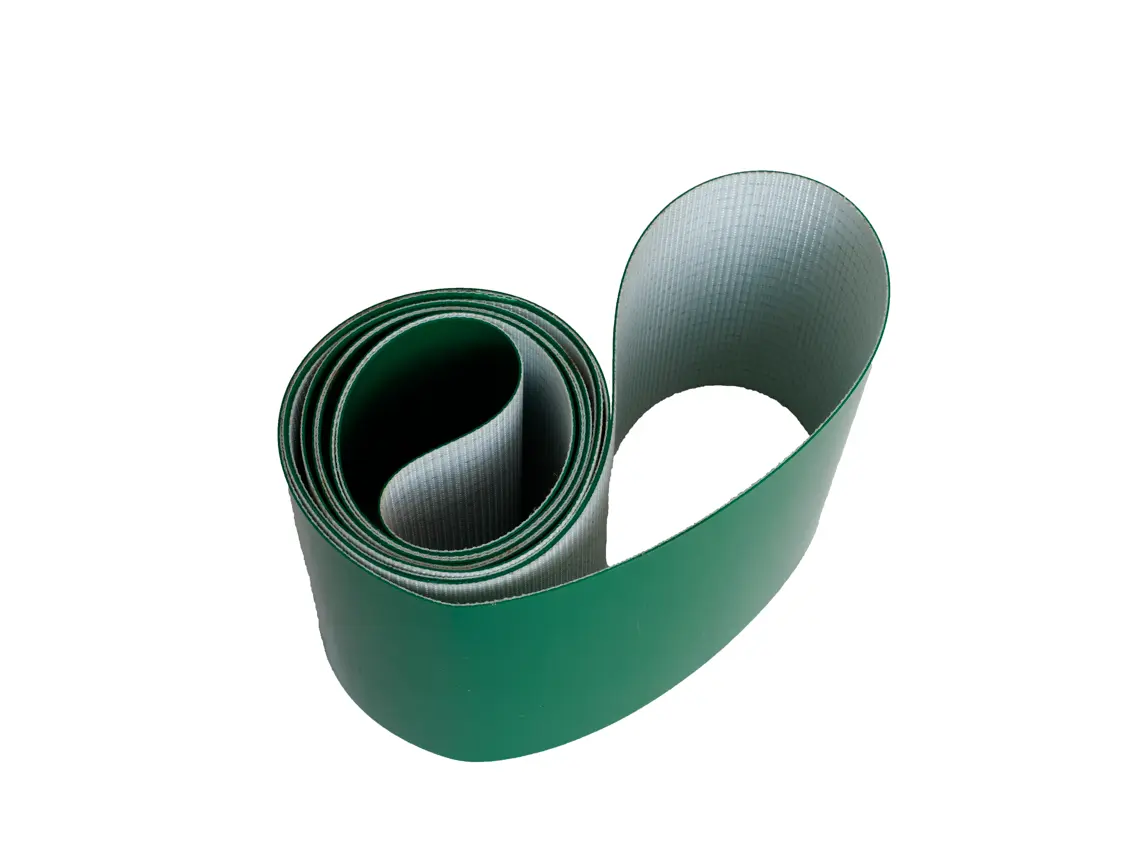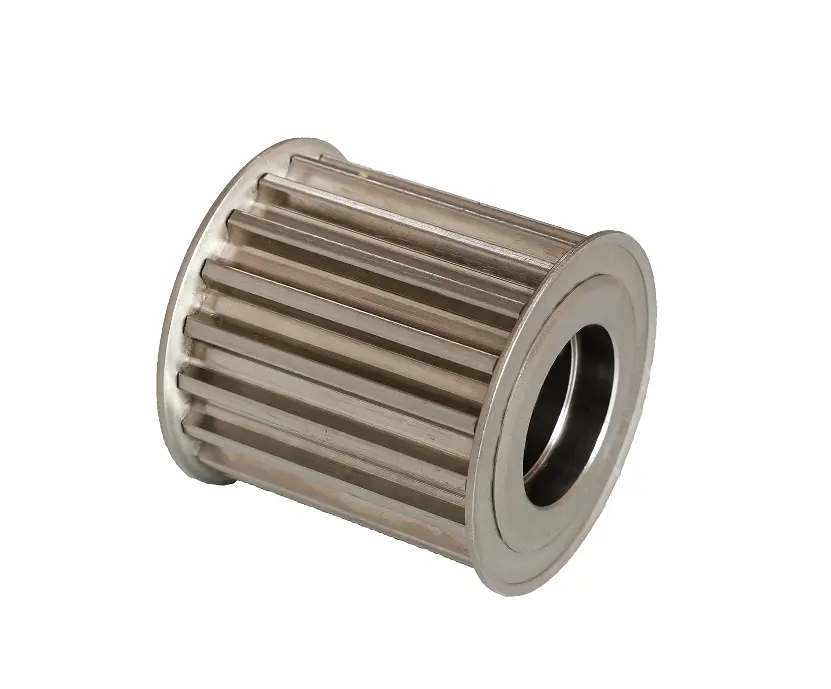Key Advances in Rubber Double-Sided Synchronous Belts

Rubber double-sided synchronous belt technology keeps moving forward. Engineers use high-strength glass fiber cords and new rubber compounds to boost performance. Recent designs, like the LP Rubber Double-Sided Tooth Synchronous Belt, offer a 50% increase in load capacity and work well in compact, high-precision spaces such as robotics and automation.
Key Takeaways
- New rubber compounds and strong glass fiber cords make double-sided Synchronous Belts stronger, more precise, and longer-lasting.
- The double-sided tooth design allows belts to transfer power in two directions, saving space and reducing noise in machines.
- Smart technologies and eco-friendly materials improve belt efficiency, help protect the environment, and support future automation needs.
Material and Design Innovations in Rubber Double-Sided Synchronous Belt

Advanced Rubber Compounds and Reinforcement
Engineers have made big changes in the way they make rubber double-sided synchronous belts. They now use advanced rubber compounds that are much stronger than older materials. These new compounds go through special processes, like vulcanization, and use custom mixtures. This makes the belts more adaptable and gives them better tensile strength. In fact, studies show that advanced rubber compounds can be tailored to meet specific strength needs. They often outperform traditional plastics in tough situations.
Researchers use smart tools, like artificial neural networks and regression models, to predict and improve the strength of these materials. For example, one study found that a new type of silicone rubber had much higher tensile strength than regular silicone, even after six months of use. The difference was so big that scientists called it highly significant. This means that rubber double-sided synchronous belts made with these advanced compounds can handle more stress and last longer.
The LP Rubber Double-Sided Tooth Synchronous Belt uses high-strength glass fiber cords inside the rubber. This special reinforcement helps the belt work well in places where space is tight and precision matters, like in robots or medical devices.
Double-Sided Tooth Profile Technology
The double-sided tooth design is a game-changer for rubber double-sided synchronous belts. With teeth on both sides, the belt can transfer power in two directions at once. This makes it perfect for machines that need to move parts forward and backward without taking up much space.
Manufacturers have worked hard to make the tooth shape just right. They use computer modeling to test different profiles and find the best one for smooth, quiet movement. The LP Rubber Double-Sided Tooth Synchronous Belt uses this kind of design. It solves the problem of traditional single-sided belts that need more room and do not work as efficiently. Now, machines can run faster and more accurately, even in small spaces.
Tip: Double-sided tooth profiles help reduce slipping and keep the belt running smoothly, which is important for high-precision equipment.
3D Printing and Custom Manufacturing
3D printing has changed the way companies make rubber double-sided synchronous belts. With 3D printing, they can create custom belts for special machines or unique projects. This means they do not have to rely on standard sizes or shapes.
Custom manufacturing lets engineers pick the best materials and tooth designs for each job. They can quickly test new ideas and make changes without waiting weeks for new parts. This saves time and money. It also means that industries like robotics, automation, and medical devices can get belts that fit their exact needs.
Some companies even use 3D printing to make small batches of belts for testing. If the design works well, they can move to larger production. This flexible approach helps bring new products to market faster.
Performance and Efficiency Gains with Rubber Double-Sided Synchronous Belt
Increased Load Capacity and Precision
Modern belts now handle more weight and work with greater accuracy. The LP Rubber Double-Sided Tooth Synchronous Belt stands out because it boosts load capacity by 50%. This means machines can move heavier parts without slipping or losing control. Precision also gets a big upgrade. In recent studies, the mean line profile error dropped to just 0.019 mm. The standard deviation of the surface profile error improved by 32%. These numbers show that new belts help machines work with much finer detail. Even small changes in accuracy can lead to a 4.67% increase in efficiency for some systems.
Reduced Noise and Vibration
Nobody likes loud machines. Engineers design new belts to run quietly and smoothly. The double-sided tooth profile helps reduce noise by keeping the belt steady as it moves. Less vibration means parts last longer and workers enjoy a quieter workspace. Many factories now choose these belts for their silent operation.
Tip: A quieter machine often means fewer breakdowns and less time spent on repairs.
Enhanced Durability and Lifespan
A rubber double-sided synchronous belt lasts much longer than older models. High-strength glass fiber cords inside the belt help it resist stretching and wear. This means fewer replacements and less downtime. Companies save money because they do not need to change belts as often. Stronger materials and better designs keep machines running for years.
Sustainability and Environmental Impact of Rubber Double-Sided Synchronous Belt
Eco-Friendly Materials and Manufacturing
Many companies now focus on making belts in ways that help the planet. They use eco-friendly materials and smart manufacturing steps to cut down on waste and pollution. Take a look at this table to see how different actions lower the carbon footprint during production:
| Factor | Quantitative Impact on Carbon Footprint Reduction | Explanation |
| Waste Reduction (WR) | Directly lowers raw material and energy consumption, reducing carbon emissions | Recycling, reusing materials, and optimizing production efficiency reduce waste and resource use |
| Energy Use (EU) | Reduces energy consumption and carbon emissions during manufacturing | Adoption of energy-efficient technologies and renewable energy sources lowers carbon footprint |
| Green Production (GP) | Minimizes resource use, waste, and carbon emissions | Environmentally friendly production processes that conserve resources and reduce pollution |
| Green Technology (GT) | Provides eco-friendly alternatives that reduce carbon footprint and energy costs | Application of sustainable technologies that enhance energy efficiency and reduce waste |
These steps make a big difference. They help companies create products like the rubber double-sided synchronous belt with less harm to the environment.
Recyclability and End-of-Life Solutions
When a belt reaches the end of its life, it does not have to end up in a landfill. Many manufacturers design belts so people can recycle or reuse them. Some companies collect old belts and turn them into new products. Others use materials that break down more easily. This approach keeps waste out of landfills and gives old belts a second life. People who use these belts help protect the planet by choosing products that support recycling.
Energy Efficiency Improvements
Modern belts do more than just last longer—they also save energy. A 2018 study used advanced models to look at how these belts work. The research showed that rubber double-sided synchronous belts lose less energy as heat and run more efficiently than older types. Engineers use this information to design belts that waste less power and stay cooler. These improvements help factories use less electricity and lower their energy bills. Everyone wins when machines run smarter and greener.
Industry Applications and Benefits of Rubber Double-Sided Synchronous Belt

Automotive and Electric Vehicle Systems
Car makers look for parts that save space and boost performance. The rubber double-sided synchronous belt fits well in these settings. It can drive two systems at once, like a water pump and an alternator, without taking up extra room. Electric vehicles need quiet and efficient parts. This belt helps reduce noise and keeps the ride smooth. The double-sided design also means fewer belts are needed, which makes maintenance easier for drivers and technicians.
Industrial Automation and Robotics
Factories and robot makers need belts that handle tough jobs. The DirectIndustry report shows these belts have hardness values from 74 to 92 Shore A. They come in many sizes and can work in hot or cold places. The Gates PowerGrip™ GT™2 Twin Power™ Timing Belts report says these belts can carry a full load from either side and work between -30°C and +100°C. Robots use these belts for precise moves and fast stops. The LP Rubber Double-Sided Tooth Synchronous Belt stands out in this field. It offers high strength and works well in tight spaces, making it a top choice for automation and robotics.
Note: These belts help robots move with accuracy and speed, which is key for modern factories.
Medical Equipment and High-Precision Devices
Doctors and engineers trust these belts in medical tools. Devices like imaging machines and lab robots need steady, exact motion. The rubber double-sided synchronous belt gives them that control. Its low transmission error means test results stay accurate. The compact size also fits well in small medical devices. Hospitals and labs benefit from longer-lasting parts and less downtime.
Future Trends in Rubber Double-Sided Synchronous Belt Technology
Smart Belt Technologies and IoT Integration
Smart technology is changing how belts work in factories and machines. Many companies now add sensors and connect belts to the internet. These smart belts collect real-time data, helping machines run better and last longer. For example, sensors can track how fast a belt moves or if it gets too hot. If something goes wrong, the system can send an alert right away. This means less downtime and fewer surprises. Smart belts also use artificial intelligence to adjust how they work, saving energy and making everything more efficient. As more factories use these systems, the rubber double-sided synchronous belt will play a big part in the future of automation.
The Worldwide Double-Sided Tooth Timing Belt Market Research Report 2025, Forecast to 2031 shows that the market for these belts is growing fast, with a projected CAGR over 6%. The report highlights how electric vehicles and automation are driving this growth, especially in the Asia-Pacific region.
Predictive Maintenance and Digital Monitoring
Factories want to avoid sudden breakdowns. Predictive maintenance uses digital tools to watch belts and spot problems early. Sensors measure things like wear and tear, speed, and temperature. When a belt starts to wear out, the system can suggest fixing it before it fails. This approach saves money and keeps machines running smoothly.
| Metric / Case | Description / Outcome |
| BSCindex (Belt Segment Condition Index) | Counts defects per meter, giving a clear picture of belt health. |
| Deterioration Rate | Shows how quickly a belt wears out over time. |
| Refurbishment Success Rate (RSR) | Jumps from 70% to over 90% with sensor-based checks. |
| Threshold BSCindex | Helps decide the best time to repair or replace a belt. |
With these tools, companies can plan repairs, avoid costly stops, and extend the life of their belts.
Customization and Modular Solutions
Every industry has different needs. Modular belt designs let companies build belts that fit their machines perfectly. These belts can be changed or expanded easily, making them great for industries like food processing, automotive, and packaging. Modular belts offer high grip, resist wear, and absorb shocks, which helps them handle tough jobs. This flexibility means less downtime and better performance. As factories move toward smart systems, modular belts help them keep up with changing demands and improve how they handle materials.
Tip: Modular solutions make it easy to upgrade or fix just one part of a belt, saving time and money.
Rubber double-sided synchronous belt technology keeps changing how industries work. These belts now offer better strength, smart features, and longer life. Many companies trust them for tough jobs. People can expect even more improvements as technology grows. Want a future-ready solution? This belt stands out.
FAQ
What makes the LP Rubber Double-Sided Tooth Synchronous Belt special?
The belt uses high-strength glass fiber cords and a double-sided tooth design. It works well in tight spaces and boosts load capacity by 50%.
Where can people use rubber double-sided synchronous belts?
People use these belts in robots, automation equipment, and medical devices. The belts help machines move with high precision and less noise.
How do these belts help the environment?
Many belts use eco-friendly materials. Some manufacturers recycle old belts. This helps reduce waste and supports a cleaner planet.




